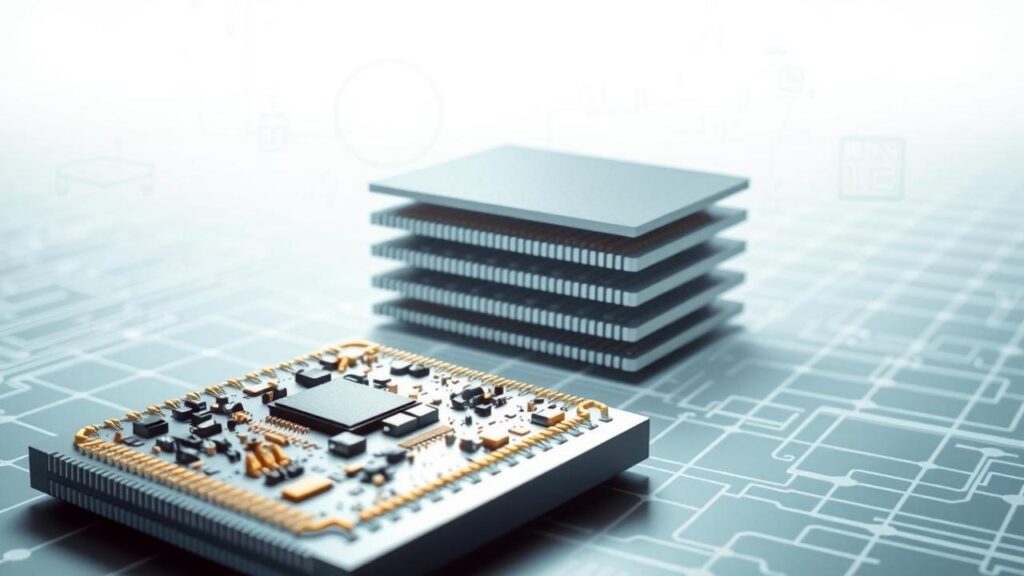Silicon Storage Technology (SST) is a leading name in the field of non-volatile memory solutions and flash storage technology. Founded in the heart of Silicon Valley, SST has played a pivotal role in the development of high-performance, low-power memory products used in a wide range of applications, including consumer electronics, automotive systems, and industrial settings. With its advanced SuperFlash® technology, SST delivers reliable, high-speed data storage that supports today’s demanding computing environments. Whether you’re building IoT devices, embedded systems, or smart electronics, understanding Silicon Storage Technology’s innovation and product range is essential.
In this article, we explore what makes SST a major player in the flash memory market and how its solutions continue to shape the future of digital storage.
Table of Contents
The Fundamentals of Data Storage
Technology continues to improve, making reliable data storage more crucial than ever. We need effective ways to manage all the digital data we’re generating.
The Evolution of Storage Media
Storage media have changed a lot. We’ve transitioned from old hard disk drives (HDDs) to new silicon-based drives, such as solid-state drives (SSDs). This change is necessary because we require faster, more reliable, and larger storage options.
Why Storage Technology Matters
Storage tech is key for both personal and business computers. It affects how well and reliably our systems work.
Performance Considerations
How fast and easily data is accessed matters a lot. Faster options, such as SSDs, make our systems run more efficiently.
Reliability Factors
Keeping data safe and sound is also key. New storage technology has improved significantly in this area. It helps ensure our data is safe and can be accessed when needed.
What is Silicon Storage Technology?
Silicon Storage Technology is a big step forward in data storage. It changes how we store, access, and manage data. It offers many benefits over old storage methods.
Core Technical Principles
This technology uses silicon materials and designs to store data. It combines complex semiconductor designs for fast and reliable data storage. The primary concept is to utilize electrical signals in silicon to store data.
Historical Development Timeline
The history of Silicon Storage is one of constant improvement. It began with early semiconductor technology and has evolved to encompass flash memory and other advancements. Important moments include the introduction of the first flash memory devices, which led to improved storage and speed.
Key Technological Breakthroughs
Several major advancements have pushed Silicon Storage Technology ahead. These include advancements in lithography, new memory cell designs, and enhanced controllers. These have led to larger storage devices that operate faster and consume less power.
How Silicon Storage Technology Works
Exploring silicon storage technology involves examining its detailed design and how it operates. It’s made to handle data quickly and store it well. This makes it key in today’s computers.
Architecture and Components
The design of Silicon Storage Technology combines memory cells and controller systems.
Memory Cells Structure
Memory cells are the basic units for storing data. They keep data safe even without power. These cells use advanced materials.
Controller Systems
Controller systems manage data movement between memory cells. They make sure data is stored and retrieved efficiently. This is vital for good performance.

Data Writing and Reading Processes
Writing and reading data need careful control over memory cells. Data is written by changing the state of the memory cells. It’s read by checking their current state.
Error Correction Mechanisms
For reliable data, Silicon Storage Technology uses advanced error correction. These systems spot and fix errors during storage or retrieval. This keeps the data safe and accurate.
Major Benefits of Silicon Storage
Silicon Storage offers numerous benefits. It has revolutionized how we store data, surpassing traditional storage methods in several key ways.
Superior Speed and Performance
This tech is known for its fast speeds and top-notch performance. It’s great for tasks that need quick data handling.
Enhanced Durability and Lifespan
It’s also more durable and lasts longer than traditional storage. Its strong build can handle tough environments.
Reduced Power Consumption
Another plus is it uses less power. This is particularly beneficial for locations such as data centers, where energy conservation is crucial.
Compact Form Factors
Lastly, it comes in small sizes. This makes it ideal for small devices and spaces where space is limited.
Silicon Storage Technology in Consumer Devices
Silicon Storage Technology has changed how devices work. It enables faster data access, allows batteries to last longer, and results in smaller devices. This tech is key to making devices better and easier to use.
Smartphones and Mobile Computing
In smartphones, Silicon Storage Technology enables apps to load faster and facilitates better multitasking. This results in a smoother experience and longer battery life, as it uses less power.
Personal Computers and Laptops
Personal computers and laptops get a boost from Silicon Storage Technology. They start up quicker and transfer data faster. This tech makes them work more efficiently, perfect for both work and play.
Gaming Consoles and Entertainment Systems
Gaming consoles with Silicon Storage offer faster loading times and improved gaming experiences. This tech is essential for a smooth gaming experience.
Wearable Technology
Wearable devices, such as smartwatches and fitness trackers, utilize silicon storage technology. They stay small but pack a big punch. This allows users to enjoy numerous features in a compact package.
As devices continue to improve, Silicon Storage will become even more crucial. It will help shape what devices can do and how we use them.
Enterprise Applications and Solutions
Silicon Storage Technology is perfect for many business needs. It meets the demands of today’s companies.
Data Center Implementations
Silicon Storage Technology is popular in data centers. It’s fast, reliable, and efficient. This helps data centers manage large amounts of data more effectively, thereby boosting performance.
Cloud Storage Infrastructure
In cloud storage, Silicon Storage Technology plays a key role. It offers the scalability and flexibility needed for cloud services. It also improves data access and security, making it a top choice for cloud storage.
High-Performance Computing
For high-performance computing, Silicon Storage Technology is a game-changer. It provides the speed needed for complex tasks. This is great for scientific research and financial modeling.
Scientific Research Applications
In scientific research, Silicon Storage Technology speeds up data processing. This enables scientists to discover and innovate more quickly.
Financial Systems
Financial institutions use Silicon Storage Technology for its speed. It helps with high-frequency trading and complex models. This boosts their efficiency and competitiveness.
Comparing Storage Technologies
Silicon Storage Technology is gaining popularity, but it’s essential to compare it with traditional storage methods. As we require more data storage, understanding the differences is crucial for making informed choices.
Silicon vs. Traditional Hard Disk Drives
Silicon Storage Technology is faster and more durable than hard disk drives (HDDs). HDDs have moving parts that can break, but Silicon Storage uses flash memory. This makes it safer from physical damage and less likely to fail.
Silicon vs. Optical Media
Silicon Storage Technology surpasses optical media, such as CDs, DVDs, and Blu-ray discs, in terms of speed and storage capacity. Optical media are slower and less handy for quick data access.
Performance Benchmarks and Metrics
Tests show Silicon Storage Technology is quicker at reading and writing data than traditional storage. It has higher IOPS and throughput, making it great for fast applications.
Total Cost of Ownership Analysis
Although Silicon Storage costs more initially, it proves to be cheaper in the long run. It’s more energy-efficient, lasts longer, and needs less maintenance. This makes it a cost-effective choice over time.
Leading Manufacturers in Silicon Storage Technology
The world of silicon storage technology is home to both established companies and emerging startups. This mix of companies pushes the limits of what’s possible. It helps both consumers and businesses.
Major Industry Players
Big names like Western Digital, Micron, and Samsung lead the way. They invest a significant amount in research and development. This helps them create new things with silicon storage.
Innovative Startups
New companies are also making a big impact. They often focus on specific areas or new uses for silicon storage. MemVerde and Everspin Technologies are examples of startups bringing new ideas to the table.
Market Share Distribution
The way market share is divided reveals the level of competition. Big companies have a lot, but startups are catching up. As their ideas get accepted, they grow their share.
Environmental Impact and Sustainability
The world is moving towards greener technologies, and Silicon Technology is leading the way. People are now more concerned about the environment when choosing technology. They look for options that are good for the planet.
Energy Efficiency Advantages
One significant advantage of Silicon Storage Technology is its low energy consumption. This means it makes less carbon dioxide than old storage methods. As more data centers emerge around the world, this is a significant development.
Manufacturing Considerations
The process of making Silicon Storage Technology also helps the environment. Companies are adopting green practices, such as utilizing solar power and reducing waste. This makes the entire process more beneficial for our planet.
End-of-Life Recycling
When Silicon Technology devices reach the end of their life, they can be recycled. This cuts down on electronic waste. Recycling is improving at recovering valuable materials, which saves resources and helps protect the environment.
In short, Silicon Storage Technology is a greener choice for storing data. It’s beneficial for the planet because it uses less energy, is manufactured in a sustainable manner, and can be recycled.
Implementation Challenges and Solutions
Adopting Silicon Storage Technology comes with its own set of challenges. Organizations must tackle these to fully benefit from it.
Technical Integration Issues
One significant challenge is integrating Silicon Storage Technology with existing systems. This means dealing with compatibility problems and possibly needing new hardware or software.
Cost Barriers and Strategies
Cost is a major hurdle. The upfront cost of Silicon Storage Technology can be high. But using a phased approach and cloud services can help reduce these costs.
Migration from Legacy Systems
Switching to Silicon Storage Technology from old systems is complex. It needs careful planning. This includes strategies for moving data and training IT staff.
By understanding these challenges and finding the right solutions, organizations can successfully use Silicon Storage Technology in their operations.
Future Trends in Silicon Storage Technology
Silicon Storage Technology is on the verge of a new era. This is thanks to new research and innovative uses. As we need faster and more efficient data storage, this field is set to change the tech world.
Emerging Research Directions
Scientists are exploring new materials and methods to enhance Silicon Storage Technology. They aim to develop more effective memory cells and utilize innovative materials. This will make storage faster and more dense.
Quantum Computing Integration
Combining Silicon Storage Technology with quantum computing is a big trend. This mix will enable quantum computers to store and process data more efficiently. This will lead to significant advancements in cryptography and complex simulations.
AI and Machine Learning Applications
Silicon Storage Technology will also play a key role in AI and machine learning. It will provide fast storage for large datasets, thereby accelerating AI services. This will help in making AI more efficient.
Predicted Timeline for Advancements
It’s hard to say exactly when these changes will occur, but experts anticipate significant progress within 10 years. As research continues to move forward, we can expect Silicon Storage Technology to improve. It will then be used in many areas.
Conclusion
Throughout this article, we’ve seen how Silicon Storage Technology is changing the way data is stored. It’s faster, more durable, and uses less power. This tech is set to change many industries, from gadgets to big business.
This technology is key because it enables faster and more reliable data storage. As companies continue to improve it, we’ll see it used more and more. It’s a big deal for many sectors.
The Silicon Storage revolution is bringing big changes to how we store data. It’s essential to stay current with new developments in this field. This way, we can enjoy the many benefits Silicon Storage Technology offers.
Find more helpful technology guides at UsaMagazne123.com.
FAQ
What is Silicon Storage Technology?
Silicon Storage Technology uses silicon to store data. It’s faster, lasts longer, and uses less energy than old storage methods.
How does Silicon Storage Technology improve performance?
It enables faster data access and improves overall system performance. This is great for tasks that need fast storage.
How does Silicon Storage Technology compare to traditional hard disk drives?
It’s faster, more durable, and uses less energy than old hard disk drives. This makes it suitable for various applications, from gadgets to large data centers.
What challenges are associated with implementing Silicon Storage Technology?
Starting to use Silicon Storage Technology can be tough. There are technical hurdles, cost issues, and the need to transition from old systems. However, with the right plans, these problems can be effectively addressed.
How does Silicon Storage Technology support enterprise applications?
It offers top-notch storage for data centers, cloud storage, and super-fast computing. This helps big companies meet their storage needs.
What is the future of Silicon Storage Technology?
Its future looks bright. New research, combining quantum computing with its applications in AI and machine learning, will lead to further progress and new ideas.

